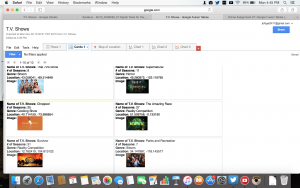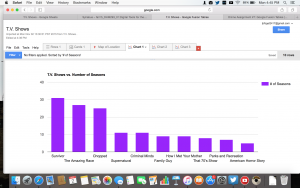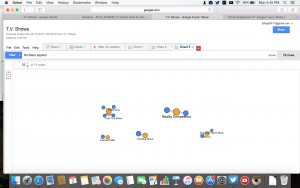Hopefully this works with no glitches!!!
Author: fogelj1
Oxford Street; “The Adventure of Blue Carbuncle”
This is Oxford Street, London. Picture from Google Maps
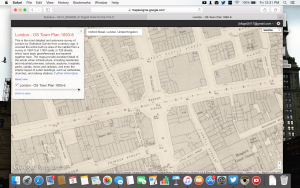
There is no doubt that Sherlock Holmes knows his way around Victorian London. In “The Adventure of Blue Carbuncle” Sherlock and his trusty companion, Watson, travel to the one of the market places that branch off of Oxford Street. Such market places were very common on Oxford Street during this era. Oxford Market was one of the largest markets on the street. This particular market attracted both rich and poor due to the merchandise it had to offer. Oxford Street according to records from the Charles Booth archive was predominately middle class (indicated by red on the map below.) However, areas surround the street had both upper class communities (yellow) and lower class dwellings (blue.) For this reason it is not surprising that the markets attracted various classes of society. 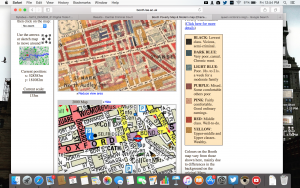
With the poor and wealthy living so closely together it came to no surprise that the most common crime that occurred in this area was grand larceny/burglary/robbery/shoplifting. This is evident in “The Adventure of Blue Carbuncle” because the man’s goose was stolen, then was used as a disguise to carry a precious gem, which was also stolen. The accuracy of historical evidence/facts (discovered on the Old Bailey archive) alines with the crime within the fictional Sherlock Holmes stories. With some further digging, I found that such Geese sales were common (especially around Christmas, which is the time in which the adventure takes place) and that animal robbery became a large issue within this region. Other crimes of historical record that are also evident with the Holmes story is fraud, deception and gambling. This is seen with the man whom sells the geese at the market place. He will only give Holmes information regarding his stock and sales when Holmes places a bet for money. Holmes uses his own deception to trick the sales man into giving him information like what he assumes is true regarding the goose and it’s origin. Thus, the plot and story line make sense because it is historically accurate. Another clue to the conditions and characteristics of this area and salesman is the man’s poverty is displayed by the clothing that he wears. He is dressed very different from Holmes and Watson who are members of the upper/middle class. His lack of wealth could easily be seen as a reason for his actions and gambling nature.
The historical attributes of Oxford Street from the Victorian era is very important in the Holmes stories. By looking at the streets history it is easy to make connects to Sherlocks adventures and assume the background stories of the character that Holmes encounters in certain regions, such as the market place. Personally, this research has helped me further characterize certain individuals within the stories. It provides more insight as to why peoples actions (stealing, lying and deception) were as presented. The poor robbed from the rich because of their poverty and even robbed from each other; as seen with the robbery of the goose. This historical research has helped answer my questions as to why the incidents with the adventures of Sherlock Holmes may have taken place.
(Works cited, links within article to webpage)
Google Fusion Tables (Take #2)
Here is the link to my Google Spread Sheet
https://docs.google.com/spreadsheets/d/18DOsbu9mAvl-Yusy7TZV1y2VebSUjC7lUOHiVjne1DA/edit#gid=0 Also a screenshot
Default Card
Bar Graph
Pie Chart
Network
Intro. Video
Go and check out my introduction video!!
Google Ngrams
I would just like to say that this assignment has finally provided a use for Letters of Note, that fun, enormous and not to mention expensive book that freshmen were told we need in order to survive first semester. Yet, it has done nothing but sit on my bookshelf and collect dust. Though today I pulled the monstrous novel off the shelf, thumbed the pages until found a series of letters written from 1823 to 1897. From there, randomly selected the first word I saw. This lead me to the words, eloquence, vigor and loquacity. Eloquence is a noun, by definition in context to the letter “fluent or persuasive speaking or writing.” Vigor is also a noun and again in context means “physical strength and good health.” Vigor can also mean, “legal and binding force.” The last word was entirely new to me; Loquacity, is a noun that means “the quality of talking a great deal; talkativeness.”
It is hard to say exactly why these words either increased or decreased in popularity over the century. I did some research and was led to a few different conclusions. For eloquence, I believe that it was more popular in the beginning of the 18th century because of Victorian or “turn of the century” writing. The word itself sounds snazzy, eloquence, therefore if an individual were to describe a narrative spoken by perhaps a heroic character then the author would want connotation and diction to match the prose. This is a common rhetorical strategy still used today just with more relatable words of the time period. Perhaps the decrease in popularity comes from stylistic changes in writing leading into the 19th century.
Vigor, unlike eloquence actually gains popularity towards the end of the century. This I believe, is for similar reasons, the change in writing styles. Vigor is simple, and doesn’t seem to lose its effectiveness as a noun. Today we still describe things as vigorous. Where if we wanted to describe the persuasiveness of a speaker, we would say persuasive, not eloquence. It’s all about time and styles of that time.
Lastly, the word loquacity. While researching I found next to nothing in regards to this funky word. It was most popular in the beginning of the 18th century. I use ‘most popular’ loosely. Even then it’s popularity is like a Highschool Sports column, written by the coach of the team, for the high school newspaper, with a total of 10 copies printed, left to read at leisure if you are bored with sleeping in detention; in comparison to Vouge. Loquacity, is an ugly word. I know that is crude but I believe that is why it was and will forever be, unpopular and scarcely used.
Sources: Google Dictionary, Google Ngram, http://www.brachcollective.org/, Letters of Note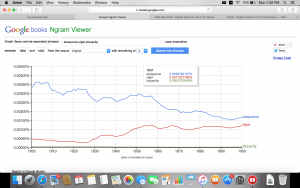 Here is the screenshot!!!!
Here is the screenshot!!!!
Book Traces
While searching for a book that may contain hidden bits from the past, I knew I had to go to the dustiest corner (which I did and my nose hates me for it) and search everywhere that was not eye level, high and low. I treated it like a scavenger hunt, the prize would not be placed right before my eyes. I knew I had to pull books with broken down bindings, ones that lacked lively colors, that blended in so they could keep their secrets. My attention was instantly caught by an elegant collection, 6 volumes written by the same author, dating 1863. They looked like a treasure chest, however they proved to be hoax. However, right to the left was a tiny, little book, barely visible, pushed back a little too far on the shelf, it’s color of moss. There seemed to be nothing exravagant about “The Piper” written by Josephine Preston Peabody, in 1910. Yet, the little, ugly, book opened right up to a page marked by someone before me and seemed to be screaming “Look what I have!!” Stuck between Act IV is a piece of news paper, a perfectly cut snippet of an article titled “Traces Criminality To Parental Faults.” I searched everywhere on the Internet to find more information on this article, unfortunately nothing was found. When I imagine who left this newspaper for me to find, I see a young woman, maybe expecting a child and perhaps was taking pointers on how to prevent her son/daughter from becoming a criminal. It is a very strange selection to hold on to otherwise because it does not seem to be of local or personal content. The article talks about a research conducted discussing the the relationship between parents and their children. It can be inferred (because half of the article is missing) that children raised in a structured household are less liking of growing up and becoming criminals. I find it very interesting that an article of scientific content is found in a Play, this suggest that who ever was reading this novel was a scholar or at least interested in numerous studies/fields.
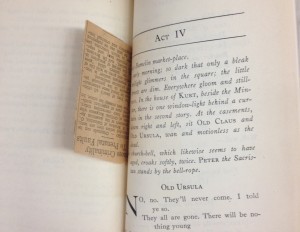
Take a look at it yourself! Here or at http://booktraces.org/ (I’ll comment link as soon as my description appears on the website.)
“The man who has never lived and will never die.”
Here are my items:
http://holmesiana.net/admin/items/show/146
http://holmesiana.net/admin/items/show/145
http://holmesiana.net/admin/items/show/144
Next, this is my collection:
http://holmesiana.net/admin/collections/show/30
And lastly, here is my exhibit:
http://holmesiana.net/exhibits/show/neverlived2/holmes
I hope you all enjoy!!!
How the Times Don’t Change
It is evident that over the course of time fashion preferences change, with each new era, new ‘hip’ hairstyles and clothing are established. The idealistic man and woman is not a modern concept, the ‘perfect’ individual has been sought after for centuries and continues to be. In Victorian London the present day ‘rugged, lumberjack’ facial hair was in fashion. After Albert Smith returned from a trip after visiting the Nile with a full ‘flowing, beastly’ beard. All is well right? Wrong, clean shaved faces were a sign of wealth and class and Albert was a candidate for The Garrick Club, which was exclusive. The present members insisted he shave is beard and be a gentlemen. Upon Alberts refusal the “Beard Movement” was born. Facial hair began to increase in popularity, ‘mutton-chop’ whiskers became ‘de riguer’ or the regular. However not all facial hair was considered fashionable, mustaches were frowned upon. Mustaches were only socially accepted on men of war, dance and or preforming arts, otherwise you were labeled a ‘snob.’ Cartoon illustrations were created to stress why mustaches were troublesome. In one advertisement a man and woman are depicted, both appearing startled because the woman’s face is bleeding due to the sharpness of the gentleman’s ‘unruly’ mustache. The fair lady states “What a tiresome great awkward boy you are! Just see how you have scratched my chin!!” This humorous presentation warns men, if you want to get a lady, a mustache will not do the job. Though society today is no longer against mustaches, the article ‘Beards and Mustaches’ shows that similar tactics are used to portray messages on what is ‘in’ and what is not in the present day. Women did not have to worry about facial hair in the Victorian Era but they did in fact need to stress over their hands. ‘White and delicate’ or otherwise described as ‘lily like’ hands were high fashion and a symbol of femininity. ‘Etiquette and Advice’ a manual, contains an entire article on what and what not to do in order to have perfect hands. The author believed that even the working woman could have delicate hands if she devoted time and effort into caring for her digits. Recommendations on how to attain perfect hands included limiting the use of ones hands, avoiding lifting objects that are too heavy and never clenching ones fist. Also the use of nail brushes, pumice stone, white sand and lemon juice will preserve softness and cleanliness. It is for this reason I blame Victorian woman for all the money I spend at the nail salon. Research has me wondering, how much do the times really change?
Jordon Fogel’s Introductory Blog
Hi everyone! My name is Jordon Fogel! I am a freshmen majoring in English and Communication disorders, minoring in Creative Writing and Journalism. I am an avid runner, yogi and writer! I also love hiking and painting! Nice to meet you all!


